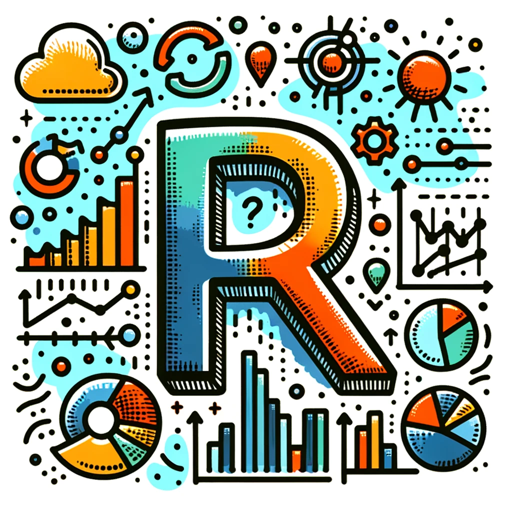Data Interpretation-AI-powered statistical analysis.
AI-driven insights from complex data.
Can you help me interpret this ANOVA table?
What does this cluster analysis result mean?
How should I read these MANOVA results?
What can I infer from this contingency table?
Related Tools
Load More
Data Analyse
Data Science Expert analyzing user-uploaded data to provide accurate insights.

Analysis with R
An expert in data analysis using the R programming language.

Data Interpreter
I analyze and interpret data from uploaded files, including Excel.

AI-Powered SPSS Aid: Manuscript Interpretation
I assist with SPSS data interpretation for academic manuscripts.

Data Analysis GPT
Your concise, friendly guide in data analysis.

Blood Test Result Analysis for Health Insight
Interprets blood tests and highlights symptoms to watch out for
20.0 / 5 (200 votes)
Introduction to Data Interpretation
Data Interpretation involves analyzing data sets to derive meaningful insights and conclusions. This process uses statistical techniques to transform raw data into information that supports decision-making. The design purpose of Data Interpretation is to help users understand complex data patterns, identify trends, and make informed decisions based on quantitative analysis. For instance, in a scenario where a company wants to understand the impact of a new marketing campaign, Data Interpretation can analyze sales data before and after the campaign to determine its effectiveness.

Main Functions of Data Interpretation
Statistical Analysis
Example
Conducting an ANOVA to compare the means of different groups.
Scenario
A researcher wants to compare the test scores of students from three different teaching methods. Using ANOVA, they can determine if there are statistically significant differences in the means of the scores across these groups.
Data Visualization
Example
Creating scatter plots to identify relationships between variables.
Scenario
A business analyst needs to understand the relationship between advertising spend and sales revenue. By plotting these variables on a scatter plot, they can visually assess whether higher advertising spend correlates with increased sales.
Predictive Modeling
Example
Developing a regression model to forecast future sales.
Scenario
An e-commerce company wants to predict next month's sales based on historical data. By creating a regression model that accounts for factors like seasonality and market trends, they can make more accurate sales forecasts.
Ideal Users of Data Interpretation Services
Researchers
Researchers in fields such as social sciences, medicine, and education often need to analyze data to test hypotheses and draw conclusions. Data Interpretation services can help them apply the appropriate statistical tests and interpret the results accurately.
Business Analysts
Business analysts use data to inform strategic decisions, optimize operations, and understand market trends. They benefit from Data Interpretation by gaining insights from their data, which can lead to better decision-making and improved business outcomes.

How to Use Data Interpretation
1
Visit aichatonline.org for a free trial without login, no need for ChatGPT Plus.
2
Familiarize yourself with the types of data analyses supported: ANOVA, MANOVA, MANCOVA, cluster analysis, MDS, contingency tables, and factor analysis.
3
Prepare your data by clearly defining your variables and their relationships. Ensure your data is clean and formatted correctly for analysis.
4
Use the tool to input your data and specify the type of analysis you need. Follow the prompts for any additional information required.
5
Review the interpretations provided. Use the insights to inform your research, make data-driven decisions, or guide further analysis.
Try other advanced and practical GPTs
Supertools GPT Finder
Discover the Best GPT Models for Your Needs

TheDFIRReport Assistant
AI-Powered Cybersecurity Reporting

20 Questions GPT
Engage with AI for classic 20 Questions fun!

Laravel
AI-powered PHP web development tool

FHIR® Interop Expert
Empowering Healthcare Data Interoperability with AI

GPT Forge
Tailored AI Solutions for Every Need

Myst
AI-powered solutions for creative exploration.

Frizzle AI
AI-driven learning for better lesson planning.

Smart Account Support
AI-powered support for smart account solutions.

Scholarly Gap Finder
AI-powered tool for finding research gaps.

Text Reviewer & Diff
AI-powered tool for academic text review

ChatWP
AI-powered assistant for your WordPress site.

- Academic Research
- Business Analysis
- Data Cleaning
- Hypothesis Testing
- Performance Evaluation
Detailed Q&A about Data Interpretation
What types of statistical analyses does Data Interpretation support?
Data Interpretation supports a range of analyses including ANOVA, MANOVA, MANCOVA, cluster analysis, multidimensional scaling (MDS), contingency tables, and factor analysis. These tools help in understanding complex data sets and drawing meaningful conclusions.
How can Data Interpretation assist in academic research?
Data Interpretation can help in academic research by providing detailed insights from complex data. It can analyze variables, highlight significant results, and suggest further analyses. This aids researchers in validating hypotheses and drawing robust conclusions.
Is Data Interpretation suitable for business data analysis?
Yes, Data Interpretation is highly suitable for business data analysis. It can process large datasets, identify patterns, and provide actionable insights. This helps businesses in decision-making, strategy formulation, and performance evaluation.
Do I need any statistical background to use Data Interpretation?
While a basic understanding of statistics is helpful, Data Interpretation is designed to be user-friendly and accessible. It guides users through the process and provides clear explanations of the results, making it suitable for users with varying levels of statistical knowledge.
Can Data Interpretation handle large datasets?
Yes, Data Interpretation is capable of handling large datasets efficiently. It utilizes advanced algorithms to process data quickly and accurately, ensuring that users get reliable results even with substantial data volumes.